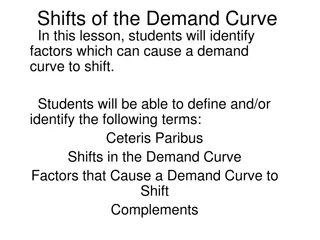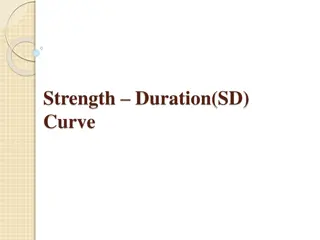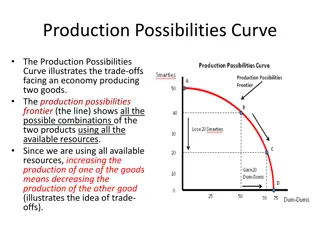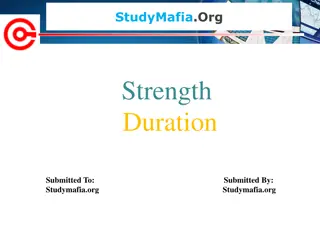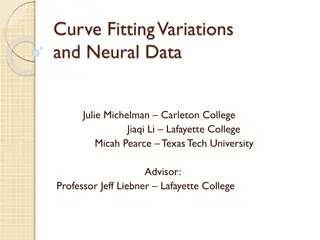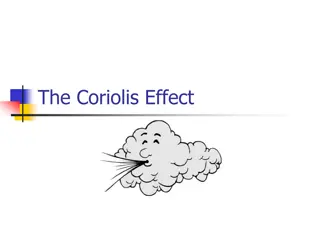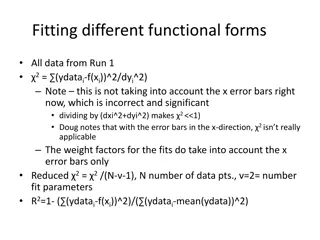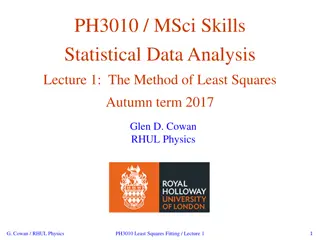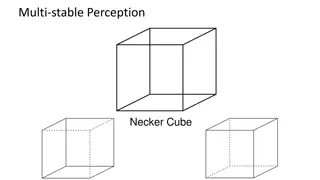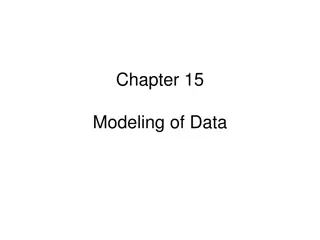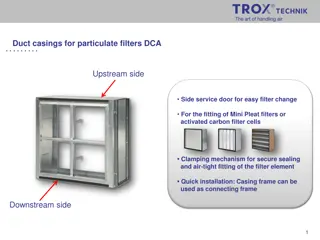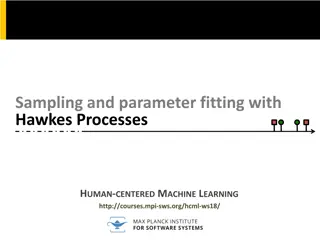Understanding Curve Fitting Techniques
Curve fitting involves approximating function values using regression and interpolation. Regression aims to find a curve that closely matches target function values, while interpolation approximates points on a function using nearby data. This chapter covers least squares regression for fitting a straight line to observations, including techniques for minimizing residuals and evaluating goodness of fit. It also discusses linearization of non-linear relationships and provides examples for practical application.
Download Presentation

Please find below an Image/Link to download the presentation.
The content on the website is provided AS IS for your information and personal use only. It may not be sold, licensed, or shared on other websites without obtaining consent from the author. Download presentation by click this link. If you encounter any issues during the download, it is possible that the publisher has removed the file from their server.
E N D
Presentation Transcript
CHAPTER-5 CURVE FITTING
1. Introduction Curve Fitting- The process of approximating function values. TECHNIQUES- REGRESSION and INTERPOLATION REGRESSION- the process of finding another curve that would closely match the target functions values INTERPOLATION- the process of approximating points on a given function by using existent data found in the neighborhood of these points.
2. Least Squares Regression Fitting a straight line to a set of observations: (x1, y1), (x2, y2), , (xn, yn) Mathematically: y=ao+a1x+e ao, a1 --- Coefficients e --- Error/Residual Objectives: calculating ao, a1, e
2. Least Squares Regression Minimization of the square of the residuals
2. Least Squares Regression Rearranging Solving for ao and a1 simultaneously:
2. Least Squares Regression Goodness of Fit Goodness of fit only tells you that the curve accurately approximates the data However, it doesn t necessarily mean that a relationship between the dependent and the independent variables exists.
2. Least Squares Regression LINEARIZATION of NON-LINEAR RELATIONSHIPS Exponential Functions Power Functions Growth Rate Equations
2. Least Squares Regression [EXAMPLE] Xi Yi 1 0.5 2 2.5 3 2.0 4 4.0 5 3.5 6 6.0 7 5.5
2. Least Squares Regression [EXAMPLE 2]- Linearization Log y= b Log(x)+ Log(a) Xi Yi 1 0.5 2 1.7 3 3.4 4 5.7 5 8.4
2. Least Squares Regression Linearized data Xi Yi Log (xi) Log(yi) 1 0.5 0 -0.301 2 1.7 0.301 0.226 3 3.4 0.477 0.534 4 5.7 0.602 0.753 5 8.4 0.699 0.922
2. Least Squares Regression POLYNOMIAL REGRESSION Example: Quadratic Polynomial
2. Least Squares Regression Quadratic Regression General Formulation
2. Least Squares Regression Example: Find the least squares parabola for the following data: (-1,10), (0, 9), (1, 7), (2, 5), (3, 4), (4, 3), (5, 0), (6, -1)
2. Least Squares Regression Solve:
Multiple Linear Regression A dependent variable may be a function of more than one variable.
Multiple Linear Regression Solving yields the least squares 3D surface that best fits the given data. This formulation can be extended to m variables (dimensions).
General Least Squares Regression [READING ASSIGNMENT]
Interpolation The process of computing intermediate data points between known data points. Newton s Interpolation Polynomials Lagrange Interpolation Polynomials
Interpolation Linear Interpolation
Interpolation [EXAMPLE]: Linear Interpolation Estimate ln(2)= 0.693147 using linear interpolation: A, initial points: (1, 0) and (6, 1.791759) B, initial points: (1, 0) and (4, 1.386294)
Interpolation Linear Interpolation of Ln(2)
Interpolation Quadratic Interpolation By setting x=x0. By setting x=x1, b0=f(x0) By setting x=x2, b0, b1[ASSIGNMENT]
Interpolation [EXAMPLE]: Quadratic Interpolation f(0)=0 f(4)=1.386294 f(6)=1.791759 X0=1 X1=4 X2=6
Interpolation Quadratic Interpolation
Interpolation General form of Newton s Interpolating polynomial Divided Differences: FIRST ORDER: SECOND ORDER: THIRD ORDER:
Interpolation [EXAMPLE] General form of Newton s Interpolating polynomial Evaluate ln(2) using a third order divided difference polynomial X0=0, f(0) = 0 X1=4, f(4) = 1.386294 X2=6, f(6) = 1.791759 X3=5, f(5) = 1.609438
Interpolation Third order polynomial First divided differences
Interpolation Second divided differences Third divided difference
Interpolation b1, b2 and b3 represent Thus
Interpolation Lagrange polynomials A direct reformulation of Newton s divided difference polynomials[READING ASSIGNMENT] Avoid the computation of divided differences
Interpolation [EXAMPLE]: Lagrange Interpolating Polynomials First Order Second Order
Splines Curves that approximate functions using low order polynomials fitted between consecutive sets of data points. Depending on the problem, splines can be superior in accuracy than interpolating polynomials
Splines First Order/Linear Splines Where
Splines [EXAMPLE] First Order Splines Fit first order splines for the following data and compute the value at x=5
Splines [EXAMPLE] First Order Splines Between x=4.5 and x=7, m= (2.5-1/7.0-4.5)=0.6 f(5)=1+0.6*(5-4.5)=1.3
Splines Limitations Abrupt Changes in slope Discontinuity in evaluating derivatives
QUADRATIC SPLINES Second order equations
QUADRATIC SPLINES (1) (2) (3) (4)
QUADRATIC SPLINES [EXAMPLE]: Fit quadratic splines for the following data
QUADRATIC SPLINES Condition 1: Function values at interior points connecting polynomials are equal. Condition 2: First and Last functions must pass through end points.
QUADRATIC SPLINES Condition 3: First derivatives at interior points are equivalent. Condition 4: a1 = 0 These equations result in a linear system of eight equations and eight unknowns(b1, c1, a2, b2, c2, a3, b3, c3).
QUADRATIC SPLINES Solving the system yields: Finally:



